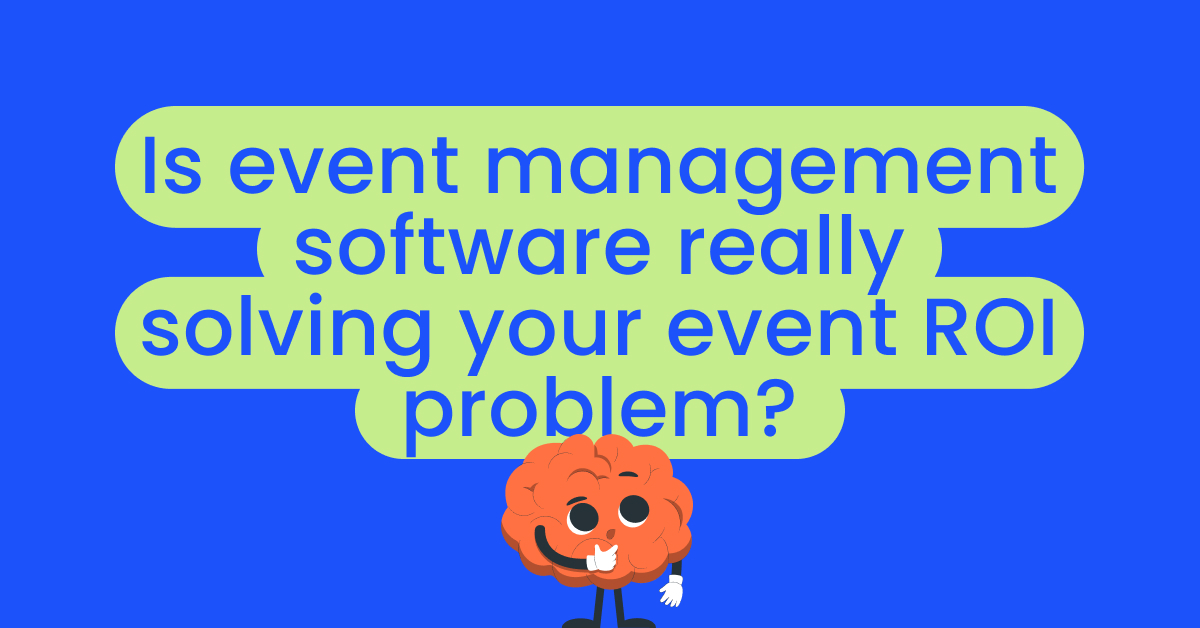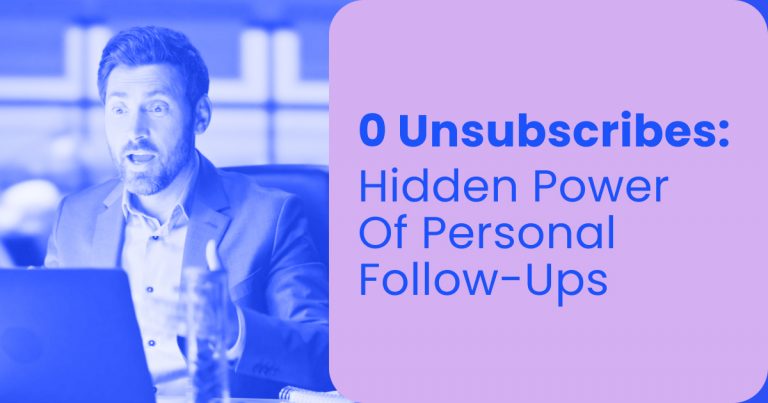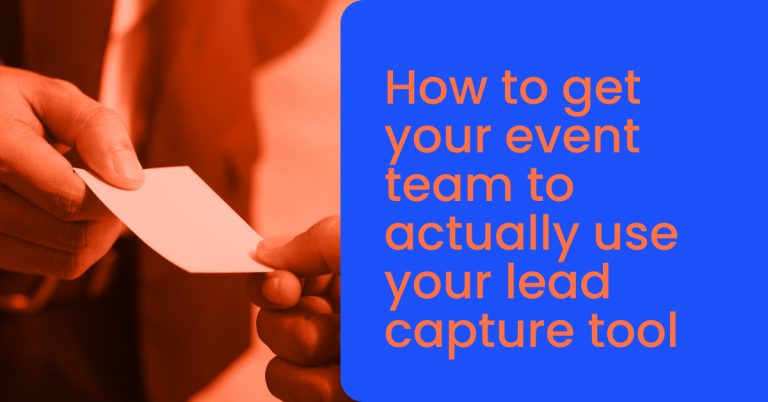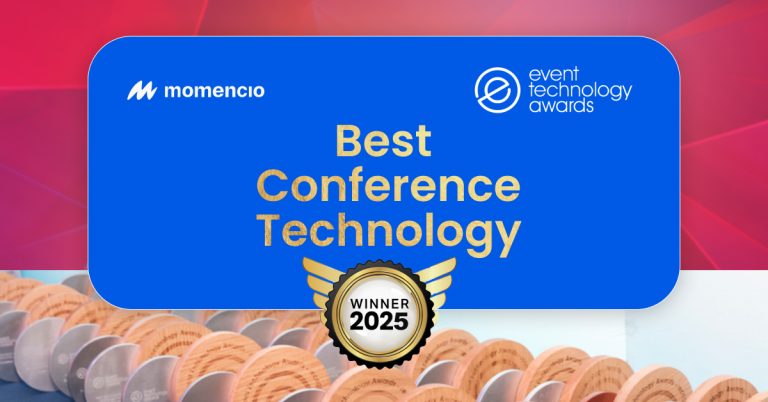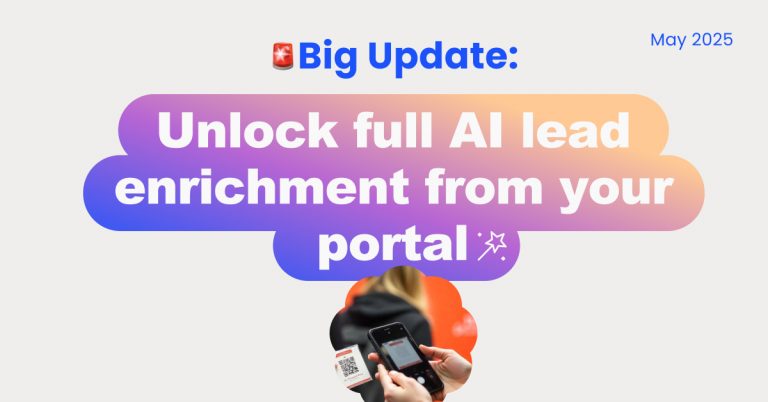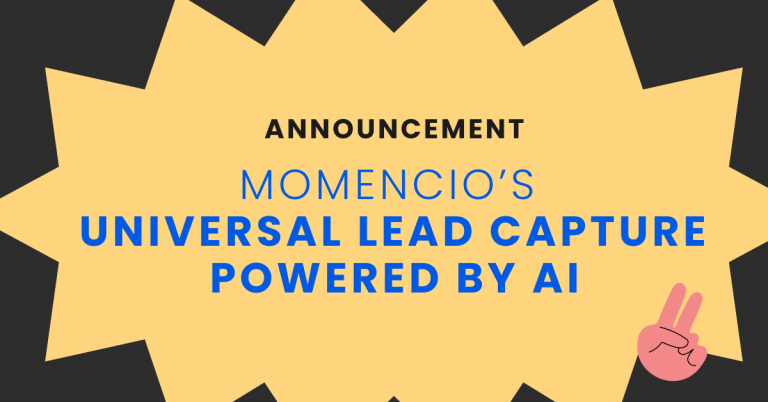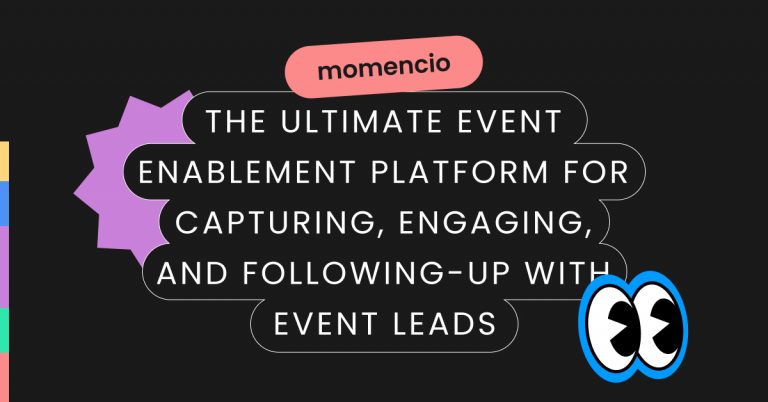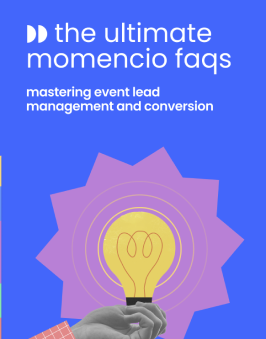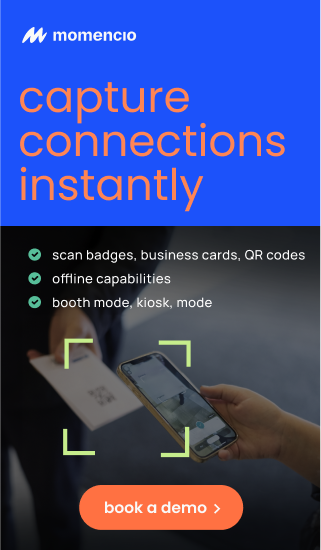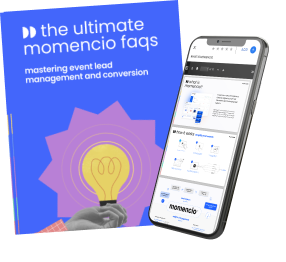Event ROI is under a microscope now more than ever. With event budgets rising again—Statista reported that the global events industry was worth $890 billion in 2020 and is expected to reach over $2 trillion by 2028—every dollar spent must yield measurable outcomes. Marketers, event planners, and sales leaders are increasingly pressured to prove the value of each event they execute, yet many are left wondering whether their event management software is actually helping or just adding another layer of complexity.
Despite the digital transformation of the events industry, most event teams still rely on a patchwork of tools for registration, engagement, lead capture, follow-up, and analytics. The result? Disconnected data, poor post-event visibility, and under-leveraged leads. And while these tools promise everything from attendee engagement to actionable insights, the reality is that very few platforms deliver the full scope needed to track and enhance event ROI effectively.
So, let’s unpack the real limitations of traditional event management software and what you need to look for if ROI is your ultimate goal.
TL;DR
While event management software has become essential for modern event planning, most platforms fall short in helping businesses truly measure and maximize event ROI. From fragmented tools to limited post-event capabilities, these shortcomings prevent marketers from turning leads into measurable business outcomes. To genuinely solve the event ROI problem, businesses must adopt integrated platforms that connect lead capture, real-time engagement data, and post-event follow-up in one seamless experience.
Understanding the true ROI of event management software
Defining ROI for event and field marketers
ROI in event marketing is deceptively complex. For many marketers, it’s tempting to boil it down to a simple equation: returns divided by costs. But this oversimplifies a reality where multiple stakeholders have different expectations and measures of success.
- For event marketers, ROI might translate into brand awareness uplift, new qualified leads generated, or pipeline velocity.
- For field marketers working trade shows or roadshows, the focus often narrows to lead capture accuracy and conversion rates.
- For sales teams, ROI is tied directly to how events accelerate opportunity creation and close deals.
Understanding these perspectives helps clarify why “event ROI” is not one-size-fits-all. It’s a blend of quantitative returns (leads, revenue) and qualitative impact (brand perception, customer engagement).
Event management software vendors often pitch their solutions around maximizing lead capture or automating follow-ups. These are important but only fragments of the broader ROI picture.
Short-term savings vs. long-term strategy
Event software can deliver immediate wins: automated registration saves hours, digital badges speed check-ins, real-time reporting cuts down manual data wrangling. But focusing solely on these efficiencies risks missing the forest for the trees.
- Short-term savings are tangible—they reduce labor costs or speed workflows.
- Long-term strategy requires integration: aligning event outcomes with sales pipelines, marketing attribution models, and customer journeys.
ROI truly manifests when software supports continuous improvement cycles — feeding back insights from past events to refine messaging, targeting, and execution.
For example: A team uses software analytics to identify which booth demos generate the most qualified leads at trade shows. By iterating on these findings over several events, they increase conversion rates over time—not just save time at each show.
Real ROI comes from that strategic feedback loop—not just automation that reduces manual tasks at one event.
How event ROI differs for sales teams vs. event planners
Sales reps and event planners approach ROI through different lenses:
| Role | Primary focus | Key metrics | Software expectations |
| Sales teams | Pipeline growth & deal closure | Leads converted to opportunities & revenue | Lead capture accuracy & CRM integration |
| Event planners | Seamless execution & engagement | Registrations, attendee satisfaction | Task automation & real-time dashboards |
Common misconceptions about what software can (and can’t) deliver
Many marketers assume event management software will:
- Automatically increase attendance
- Guarantee higher lead quality
- Replace human creativity in booth engagement
- Deliver perfect data without input errors
These misconceptions breed disappointment when results fall short of expectations.
What software really delivers:
- Efficient workflows (registration, badge printing)
- Centralized data collection
- Basic analytics dashboards
- Integration with marketing/sales platforms
What it doesn’t replace:
- Strategic planning and messaging
- Human rapport building at events
- Quality control of captured leads
- Cross-team coordination beyond platform boundaries
Recognizing these limits encourages smarter investment decisions—deploying technology as an enabler rather than a cure-all for every challenge in your event ecosystem.
The limits of traditional event management software
Let’s be clear: event management software has come a long way. Tools like momencio offer polished user interfaces, customizable registration forms, and engagement tools like polling and Q&A. But when you dig deeper, most are still limited to a narrow phase of the event lifecycle.
The shortcomings fall into five major categories:
- Fragmented Tech Stacks: Tools handle registration, badge scanning, content sharing, and follow-up separately. This fragmentation leads to siloed data and redundant workflows.
- Limited Real-Time Analytics: Many platforms only provide post-event reporting, not the real-time insights needed to adjust strategy on the fly.
- Weak Lead Qualification: Basic tools might record attendance, but they rarely score leads based on engagement signals or integrate deeply with sales systems to prioritize follow-up.
- Generic Follow-Up: Without engagement context, follow-up emails are templated and irrelevant. This generic approach diminishes conversion potential.
- Minimal Sales Integration: Event insights often live in marketing’s domain, creating a disconnect with sales teams who need timely, detailed intelligence to close deals.
Ultimately, these platforms support execution—not strategy. And in a B2B context, where events are about influence and pipeline, this gap is critical.
What a truly ROI-focused event solution looks like
To genuinely solve the event ROI problem, marketers need tools that go far beyond logistics. They need integrated systems that align marketing and sales from the moment an attendee registers to the point of post-event follow-up and pipeline conversion.
A few hallmarks of truly ROI-centric event technology include:
- End-to-End Integration: A unified platform that captures data before, during, and after the event. This includes syncing with CRM systems and marketing automation tools to ensure leads are tracked and nurtured effectively.
- Engagement Scoring: Not all attendees are equal. Smart systems score leads based on behaviors—booth visits, session attendance, content downloads—to help sales prioritize.
- Personalized Follow-Up: Instead of batch emails, advanced platforms trigger customized post-event outreach based on attendee behavior and interests.
- Real-Time Insights: Dashboards that provide live visibility into event performance empower on-the-spot decisions and content adjustments.
- Conversion Attribution: The ability to trace revenue back to specific event touchpoints and interactions, providing full-funnel transparency.
With these capabilities in place, marketing leaders can connect events directly to business growth, rather than treating them as brand awareness exercises.
The real cost of disconnected event data
Disconnected systems don’t just lead to operational inefficiencies—they actively undermine ROI.
When event data lives in multiple systems that don’t communicate, critical insights fall through the cracks. A high-intent prospect might visit a booth, download a whitepaper, and attend two sessions, but unless that data is centralized, the sales team will never know.
This not only hurts lead conversion but also impacts future planning. Without accurate engagement data, marketers can’t optimize booth design, content strategy, or speaker selection. They’re flying blind, making decisions based on assumptions instead of insights.
And then there’s the human cost. Your team is stuck exporting CSVs, manually uploading contacts to CRM systems, and chasing down sales reps for feedback. Time that could be spent strategizing is wasted on admin.
When you factor in opportunity costs—missed deals, slower sales cycles, reduced customer LTV—the true cost of disconnected data is staggering.
The new blueprint: Events as revenue engines
To fully unlock ROI, the mindset around event software needs to shift from “event planning tool” to “revenue enablement platform.”
Modern B2B marketers are already making this transition. According to Demand Gen Report, more than 60% of marketers are now using events to drive demand generation rather than just brand awareness. This shift requires platforms that support pipeline-centric strategies.
Here’s what that looks like in practice:
- Pre-Event: Use behavioral and firmographic data to target and invite the right audience. Track pre-event engagement (e.g., email clicks, webinar attendance) to tailor outreach.
- During Event: Capture every interaction—scanned badges, booth dwell time, questions asked—and feed it into a single engagement profile.
- Post-Event: Launch triggered nurture tracks based on the attendee’s specific interests, behaviors, and readiness to buy.
- Long-Term: Use engagement data to refine audience segments, improve content, and better allocate event budgets moving forward.
Platforms that enable this kind of end-to-end journey don’t just measure ROI—they improve it.
Event management software vs. event engagement platforms
It’s time we draw a clear distinction. Traditional event management software helps plan events. But what marketers actually need are event engagement platforms—tools that drive outcomes, not just logistics.
Event engagement platforms combine the functionality of event management with the intelligence of marketing automation and the targeting of sales enablement. They treat every event as a growth opportunity, and every attendee as a potential customer.
The best platforms don’t just track data—they act on it. They empower marketers and sales to personalize every interaction and drive measurable impact across the funnel.
This is where legacy systems fall short. They weren’t designed to do this. They were built for managing registrations, seating charts, and check-ins—not for powering revenue engines.
If your goal is ROI, it’s time to retire the registration-first mindset and embrace a full-funnel approach.
Top 3 tips for unlocking true event ROI
- Centralize your data: Choose a platform that integrates with your CRM, marketing automation, and sales tools. Avoid manual uploads and exports at all costs.
- Score and segment your leads: Not every lead deserves the same treatment. Use engagement data to prioritize high-intent contacts and tailor follow-up accordingly.
- Automate intelligent follow-ups: Build personalized microsites, dynamic emails, and customized content journeys triggered by attendee behavior.
These aren’t just nice-to-haves—they are essential to proving and improving ROI.
Conclusion
The verdict is clear: traditional event management software is not enough. If you’re still using platforms that stop at registration or badge scanning, you’re only scratching the surface of what your events could deliver.
Event marketers and field professionals need more than operational efficiency—they need intelligence, integration, and outcomes. They need platforms that turn interactions into insights, and insights into revenue.
The future of event marketing lies in connected, data-rich, outcome-driven platforms. Anything less is just managing the chaos, not capitalizing on the opportunity.
If you’re ready to evolve beyond fragmented tools and finally unlock your event’s true ROI, it’s time to explore a more integrated, intelligent solution. momencio is designed to bridge the gap between engagement and revenue, helping event teams turn every interaction into a measurable outcome.
Book a demo today and discover how you can transform your next event into a revenue powerhouse.
Interesting facts from research
- Only 23% of marketers say they can measure event ROI accurately.
- Researching audiences to understand them better is a concern for 31% of marketers.
- The average B2B company spends 18% of its total marketing budget on events.
- Companies that use integrated marketing and event platforms see a 25-35% improvement in lead conversion rates.
- Personalized follow-ups post-event improve conversion rates by up to 80%.
FAQs
- What is event management software?
- Event management software helps with planning, organizing, and executing events. It typically includes tools for registration, scheduling, and attendee management, but often lacks in-depth ROI tracking or post-event engagement capabilities.
- Why doesn’t traditional event software solve the ROI problem?
- Because it focuses primarily on logistics rather than engagement, lead nurturing, or sales enablement. ROI requires insight into attendee behavior and long-term tracking of conversions, which many tools lack.
- What features should I look for in an ROI-focused event platform?
- Key features include real-time analytics, engagement scoring, CRM integration, automated follow-ups, and conversion attribution.
- Can integrated platforms improve lead conversion from events?
- Absolutely. Platforms that tie event engagement directly into sales workflows help sales teams prioritize leads and personalize outreach, improving conversion significantly.
- How can momencio help with event ROI?
- momencio provides a unified platform that captures leads, tracks interactions in real-time, automates personalized follow-ups, and integrates seamlessly with CRM systems—helping turn every event lead into a sales opportunity.
